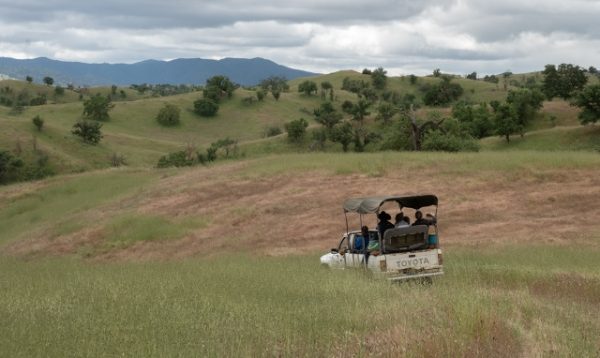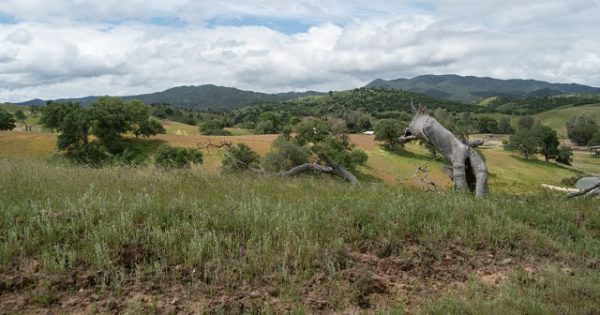Conservation group preserves thousands of acres at working ranch
Camatta Ranch in eastern San Luis Obispo County is the largest conservation project in the organization’s history
– Earlier this month, The Land Conservancy of San Luis Obispo County completed a conservation easement on the Camatta Ranch in eastern San Luis Obispo County. The easement permanently conserves this 27,512-acre working ranch with blue oak woodland, annual grasslands, and diverse chaparral. The protected acreage almost equals the area of the city of San Francisco and is more than three times the size of the City of San Luis Obispo.
This ranch stretches from the edge of the La Panza Range along Highway 58 to the rolling grasslands south of Highway 41. The Camatta Ranch was formed in 1846 and has been owned by the Morrison family for many decades. Today, the family grazes livestock, grows a variety of crops, and operates a diverse ecotourism business including welcoming community groups to explore and learn from the land. When the ranch became threatened by partition and sale in 2019, the Morrisons approached The Land Conservancy to ask about their options to conserve the property through a conservation easement.
The Camatta Ranch offered a rare opportunity to protect an entire landscape for wildlife habitat, endemic plants, local sustainable agriculture, and scenic open space with a single conservation easement. “We had the chance to keep a longstanding ranching family on the land, maintain the incredible suite of programs that they offer to the community, and safeguard important habitat for critters such as raptors and San Joaquin kit fox. We couldn’t pass on this once in a generation opportunity to protect such a significant property from imminent division and future development,” says Executive Director of The Land Conservancy Kaila Dettman.
Haustin Morrison described what this conservation easement means for the Morrison family and their business: “Having such a large chunk of the inland part of SLO County protected forever is huge. This easement means being able to continue working the ranch, cultivating it, being here, living on it and then passing it on to future generations. This was a make-or-break opportunity for the ranch. This property is [going to] be here way past me and my family. Our time here is short, but this property is protected forever.”
The easement was funded by the Wildlife Conservation Board, the California Strategic Growth Council’s Sustainable Agricultural Lands Conservation Program using California Climate Investments funds, and the California State Coastal Conservancy.
Funds for the Camatta Ranch conservation easement were made available through the California Strategic Growth Council’s Sustainable Agricultural Lands Conservation Program in collaboration with the Department of Conservation. The program is part of California Climate Investments, a statewide initiative that puts billions of Cap-and-Trade dollars to work reducing greenhouse gas emissions, strengthening the economy, and improving public health and the environment – particularly in disadvantaged communities.
This conservation easement would not have been possible without the involvement of multiple partners, including the Nature Conservancy and LegacyWorks Group, according to The Land Conservancy.
A conservation easement is a permanent agreement between a landowner and a land trust that protects land by restricting future land uses on the property. Conservation easements are voluntary agreements and remain in effect if the property is later sold or passed down to the next generation. In this case, the conservation easement does not provide for public access to the Camatta Ranch, beyond what their current business operations allow.
The Land Conservancy is currently celebrating its 40th year of conserving open spaces, wildlife habitats, and farmland on the Central Coast. A local non-profit, it has permanently protected over 66,000 acres of land in SLO County.
Comments
The news staff of the Paso Robles Daily News wrote or edited this story from local contributors and press releases. The news staff can be reached at info@pasoroblesdailynews.com.






















